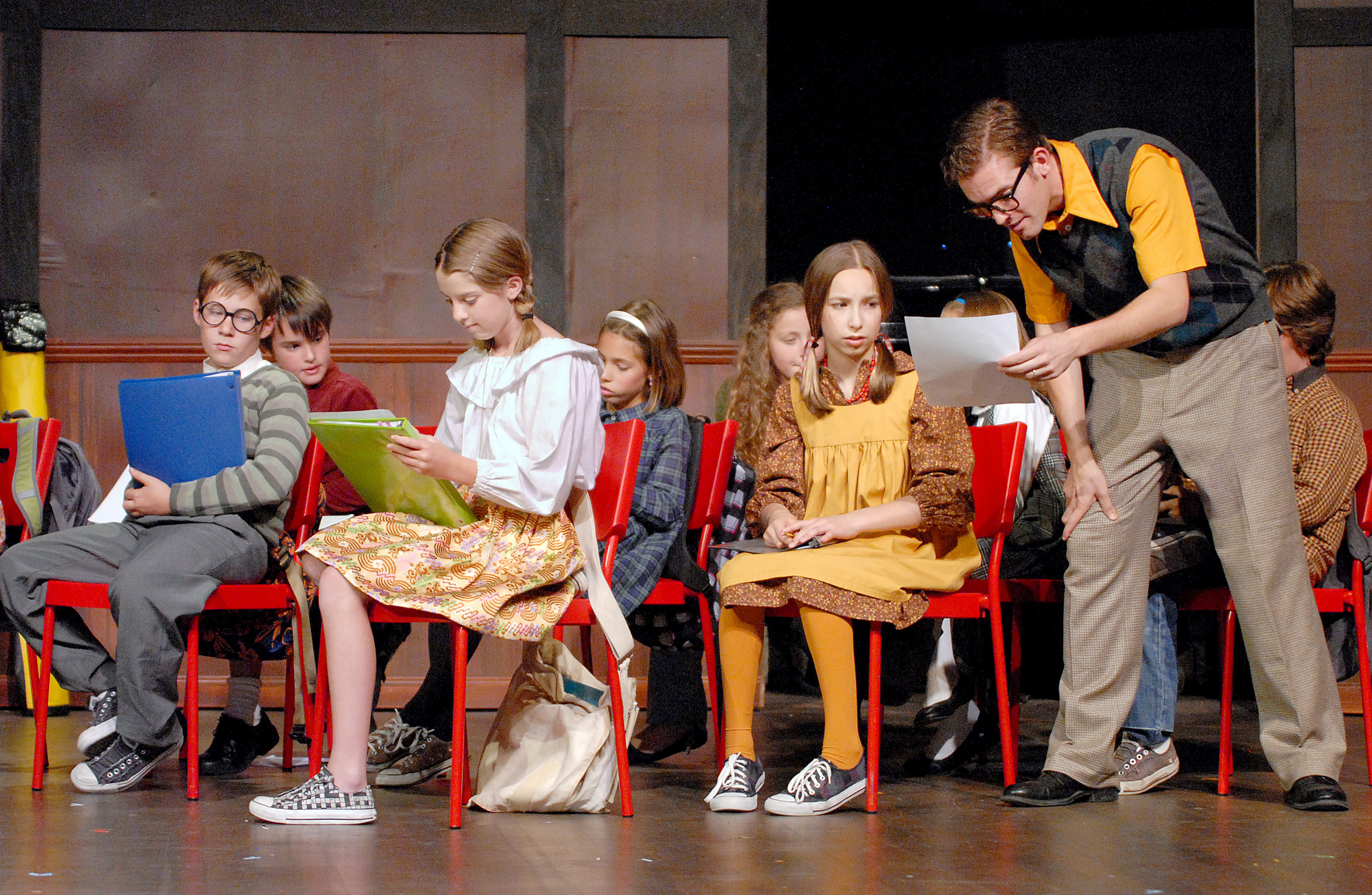At a weekend rehearsal for “Thank You, Mr. Falker” at the Morgan-Wixson Theatre in Santa Monica, Professor Gary Gardner took direction from his students.
Sitting in the back of the theater was director Lane Williamson, a fourth-year theater student, repeatedly shouting “Volume!” and prompting Gardner and the other actors to sing louder. Behind the piano was musical director and graduate student Sarah Taylor Ellis, playing the score she composed.
On stage were these two UCLA students’ very own proteges, a group of big-voiced 8- to 13-year-olds performing a number from the picture book adaptation “Thank You, Mr. Falker,” which runs through May 29.
During the audition process, Taylor Ellis said they found it difficult to find adult actors willing to work with a group of 10 children. Enter Professor Gardner.
“(These UCLA students) were all my babies, and they’ve done me favors, so I had to do them favors,” Gardner said. “I’m at the age now that whenever they need someone dying or getting Alzheimer’s, they call on Gary.”
Gardner’s character here is no exception. He dies after encouraging Trisha (played by 12-year-old Sophie Smyth), his granddaughter and the protagonist of the play, through her struggles to read.
Though neither the play nor the book explicitly uses the word “dyslexia,” Trisha explains that she cannot read because the letters “get jumbled” in her head. Only when she joins kind Mr. Falker’s class, and sings and dances through musical numbers such as “Frenetic Phonetics,” does she finally learn.
Alumnus Nick Tubbs plays Falker. Tubbs said he was drawn to the play because of his character’s unusual teaching methods, such as when he suggests to the artistically inclined Trisha that she imagine letters and words as pieces of art so as to better remember them.
“Obviously, the kids are the best part,” Tubbs said. “The adults are good, but the kids really make the show come to life.”
In one teaching scene, Tubbs tap dances at the front of the stage as six of his students mimic his steps. According to Christopher Albrecht, choreographer and alumnus, this dance is one way the creative team can show the audience that the children are learning from Falker.
“Real life people don’t bust out in the classroom and dance in unison. I’m a big advocate of dance in musicals as another way of storytelling,” Albrecht said.
Albrecht said he loves that musical theater offers alternative forms of expression and always remembers how a high school teacher explained it to him.
“In a musical, we don’t just dance and sing to be pretty,” Albrect said. “But what can’t be said can be sung. And what can’t be sung can be danced.”
In fact, Williamson and Taylor Ellis said that what initially drew them together was their shared love for classical musical theater and its emphasis on the ensemble.
“Everything about contemporary musical theater is, “˜How many cast albums are we going to sell with these crazy belting notes?'” Williamson said.
Instead, Taylor Ellis and Williamson created a play that focuses on an ensemble of children at the center of the story. In the original book, little was said of Patricia’s classmates, but here, the new characters have distinct personalities.
“The community and the ensemble is the central purpose of a musical,” Taylor Ellis said. “And that’s the sort of community that I think we should be building, especially among kids.”
